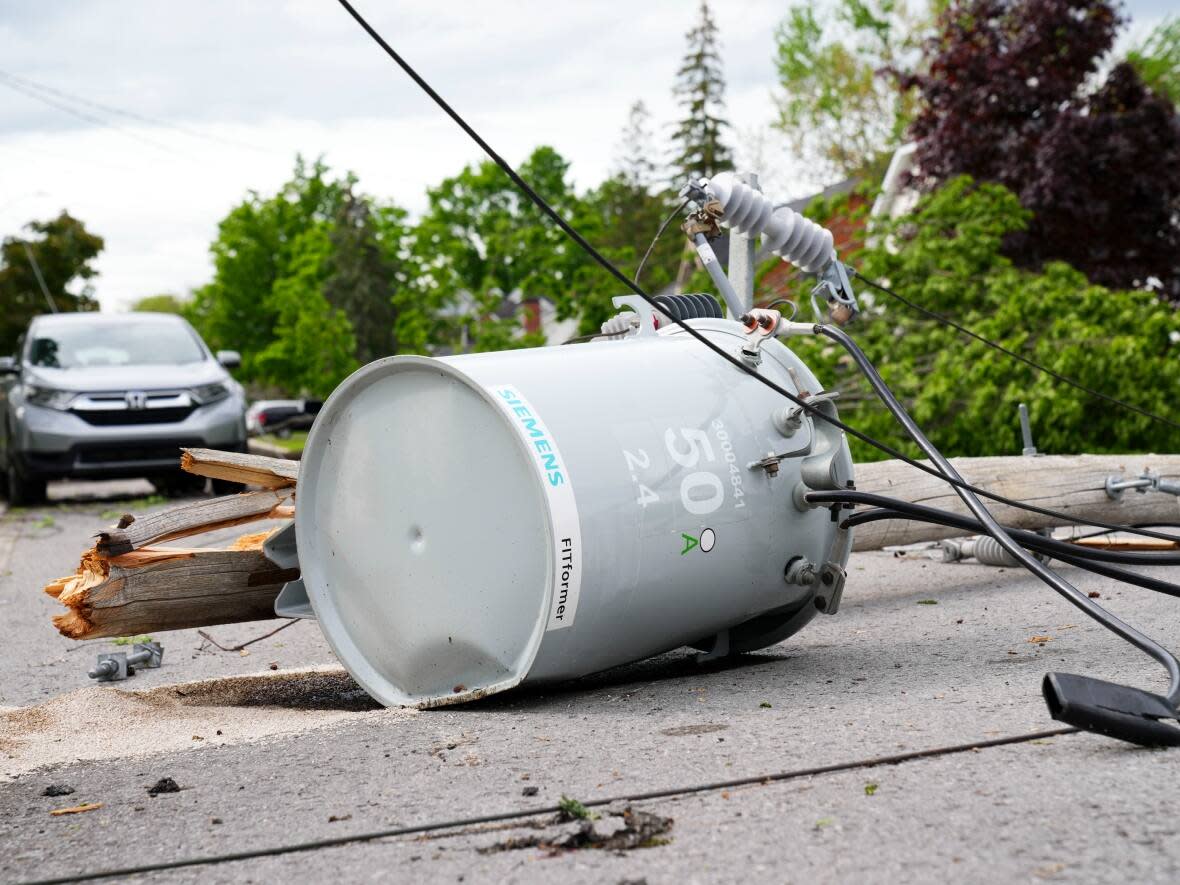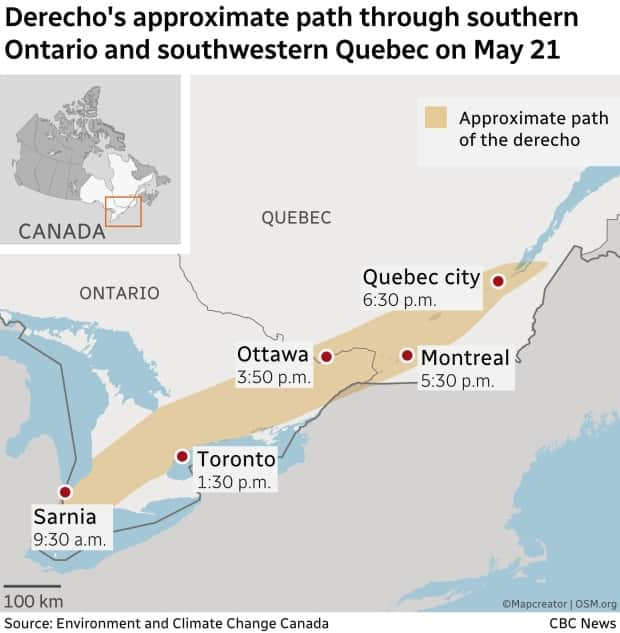Not everyone's phone got that storm alert. It's not clear why

While some are praising the use of an emergency phone alert to warn people about the fatal storm that ripped through southern Ontario and western Quebec last weekend, other cellphone users say they didn't get the message and want to know why.
Luc Fournier said he did not receive the Saturday alert and yet was woken up by an Amber Alert on his phone early Wednesday morning.
"Something was not working," he said of the Saturday alert.
Fournier and his family were at their cottage at Lac-des-Plages, Que., located about 125 kilometres northeast of downtown Ottawa, when the storm hit at around 4 p.m. ET.
Half an hour earlier, one of Fournier's sons left to go fishing and rock wall climbing at a location without cell service about 10 kilometres from the cottage, he said.
After the storm, it took Fournier 30 to 40 minutes to chainsaw his way through three trees blocking the path to his son's pickup truck, he said.
While his son was safe, "[he] would not have gone fishing" had they received the alert, Fournier said.
"And we would have been a lot more careful with making sure that everything was secure."

An uprooted tree struck a small shed on Fournier's property and was resting on hydro lines feeding the cottage until Fournier hired someone to remove the tree on Wednesday.
"We have yet to see a hydro crew," he said.
Older phones may not send warning
A total of six emergency alerts sent people's phones ringing in Ontario beginning late Saturday morning, while even more were issued as the storm continued through Quebec, said Ken Macdonald, Environment and Climate Change Canada's executive director of national programs.
The alerts also went out on people's TVs and radios.
The first of the phone alerts for the Ottawa-Gatineau region was issued at 3:18 p.m. as the line of storms — known as a derecho — was west of Perth, Ont., Macdonald said.
The alert is first transmitted to cable TV companies, radio stations and wireless phone service providers "and then they take it and analyze it to see if it applies to the region in question," Macdonald said. "Then they they put it out on their systems."
Each carrier might reply at a slightly different pace, which helps explains why not everyone in the same area got the alert at the same time, he added.
As for why some people didn't get the alert at all, Macdonald said the system is not designed for older phones that do not operate under an LTE wireless or a newer wireless network (5G).
"They all should trigger that warning tone," Macdonald said of compatible phones. "If it didn't trigger that, then that may be an issue with the actual [phone]."

Check your phone's compatibility
When reached for comment, both Bell and Rogers pointed to online checklists customers can consult to see if their cellphone model is compatible with emergency alerts.
Fournier said he has an iPhone 13, which is compatible.
Bell's guide points out that devices set to silent or "do not disturb" may result in alerts being hidden with other notifications, while Rogers asks that Android users ensure the "Cell/Mobile Broadcast" option is turned on in their phone settings.
Bell and Rogers each referred further questions to Pelmorex, the Ontario-based company that owns Canada's Alert Ready software system. Pelmorex operates the system on behalf of the federal government and says it "worked as it was intended" on Saturday.
Compatible phones must be "equipped with the latest version of [their] operating software," the company also pointed out in an emailed statement to CBC News.
"In addition to wireless device capabilities, the user also has to be in the geographical area where the alert is issued."

 Yahoo Movies
Yahoo Movies 
